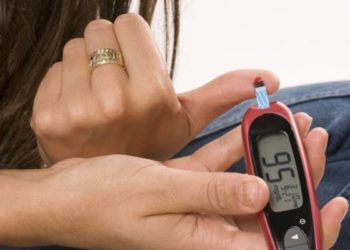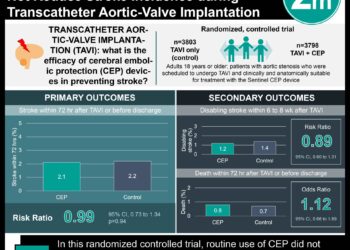Addition of immunosuppression does not improve outcome of supportive therapy for IgA nephropathy
1. Addition of immunosuppression to supportive therapy did not lead to significantly improve outcomes described as full remission and a decrease in the eGFR of at least 15 ml/min/1.73 m2of BSA after 3 years of follow-up.
2. There was no significant difference between the rate of decreases in eGFR between patients who received supportive care alone and patients who received immunosuppression in addition to supportive care.
Evidence Rating Level: 2 (Good)
Study Rundown: IgA nephropathy is the most common form of glomerulonephritis. The current Kidney Disease: Improving Global Outcomes (KDIGO) guidelines recommend blockade of the renin-angiotensin system using an angiotensin-converting-enzyme inhibitor (ACEI) or an angiotensin II-receptor blocker (ARB) for patients with IgA nephropathy who have > 1 gram of urinary protein excretion per day. The KDIGO guidelines also recommend using systemic glucocorticoid immunosuppressive therapy in patients who have >1 gram of urinary protein excretion per day and a GFR > 50 mL per minute despite supportive treatment. To date, there have been conflicting controlled trials that have attempted to assess the utility of immunosuppressive glucocorticoid therapy in addition to standard supportive therapy (ACEI/ARB) over supportive therapy alone.
This study began with a six-month run-in phase, wherein all the patients received an ACEI/ARB. If after the six-month run-in phase, proteinuria remained elevated, patients entered the 3-year study phase. Patients either receive supportive care alone (supportive care group) or supportive care and immunosuppression (immunosuppression group). Patients whose proteinuria of eGFR did not respond sufficiently were found to be eligible for randomization in the 3-year study phase in either the supportive therapy group or immunosuppression group. The first primary endpoint of the study was full clinical remission at the end of the 3-year trial phase (as measured by protein to creatinine ratio <0.2), in which a statistically significant difference was found. The second primary endpoint of the study was a decrease in eGFR ≥ 15 mL/min/1.73m2, in which no significant difference was found.
This study draws strength from its randomized, controlled, two-group, parallel, group-sequential design. It also avoided the confounders that emerged in prior investigations of immunosuppression in IgA nephropathy through maintaining strict, consistent adherence to renin-angiotensin blockade. This study lacks in its ability to be extrapolated to cases of more advanced disease, such as patients with proteinuria >3.5 g per day or eGFR < 30 mL/min/1.73m2.
Click to read the study, published today in NEJM
Relevant Reading: IgA Nephropathy
In-Depth [randomized controlled trial]: In this study, 337 patients at 32 nephrology centers in Germany were enrolled in the initial 6-month run-in phase. During this phase, all the patients received comprehensive supportive therapy that included ACEI/ARB therapy to lower BP below 125/75 mmHg. If after the six-month run-in phase, proteinuria remained between 0.75 – 3.5 g per day, patients entered the 3-year study phase. These patients were randomized to receive either supportive care alone (supportive care group) or supportive care and immunosuppression (immunosuppression group). Patients with eGFR ≥ 60 mL/min/1.73m2 were randomly assigned to the immunosuppression group received glucocorticoid for 36 months while patients with eGFR 30 – 59 mL/min/1.73m2 were assigned to receive cyclophosphamide followed by azathioprine plus prednisolone for 36 months.
At the end of the run-in phase 177 patients were found to be eligible for randomization in the 3-year study phase. The primary endpoint showed a statistically significant higher percentage of full clinical remission at 36 months (5% of patients in the supportive-care group vs. 17% of patients in the immunosuppression group; p=0.01). In the analysis of available cases, it was found that 4/72 supportive care patients’ vs 17/71 immunosuppression patients exhibited full clinical remission (95% [CI], 1.55 – 18.66; p = 0.008).
Image: PD
©2015 2 Minute Medicine, Inc. All rights reserved. No works may be reproduced without expressed written consent from 2 Minute Medicine, Inc. Inquire about licensing here. No article should be construed as medical advice and is not intended as such by the authors or by 2 Minute Medicine, Inc.







